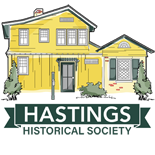Chasing the Moon, Part II
In the last post we described how John William Draper took the first photographs of the moon. His son, Henry, was also a physician and an avid amateur photographer. In 1857 he visited Ireland and the world’s largest reflecting telescope built by the Earl of Rosse in the 1840s. When he came back to the United States, he began to build his own observatory on the family property in Hastings.
The observatory, completed in 1860, was very much a home-made affair, constructed with help from his father and his brother, Daniel. They polished the mirrors for the telescope by walking on a treadmill.
In 1863 Henry took a series of photographs of the moon through his telescope that showed far more of the moon’s features than any photographs taken previously, or for several decades to come. They were so sharp that the moon could be enlarged up to 50 inches in diameter without loosing any detail. They conveyed the appearance of the moon so vividly that at the time they were referred to as “portraits”. The director of the Smithsonian Institution visited Henry’s observatory and was so impressed that he asked Henry to write a description of his process, which the Smithsonian later published.
In 1869, Henry constructed a second observatory adjoining the first, in order to house a new and larger telescope. With this, he took some of the earliest photographs of comets, lunar eclipses, and nebulae, and the first photograph of the spectrum of a star.














Great post, and great website. Thanks for the information!
polarlicht